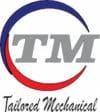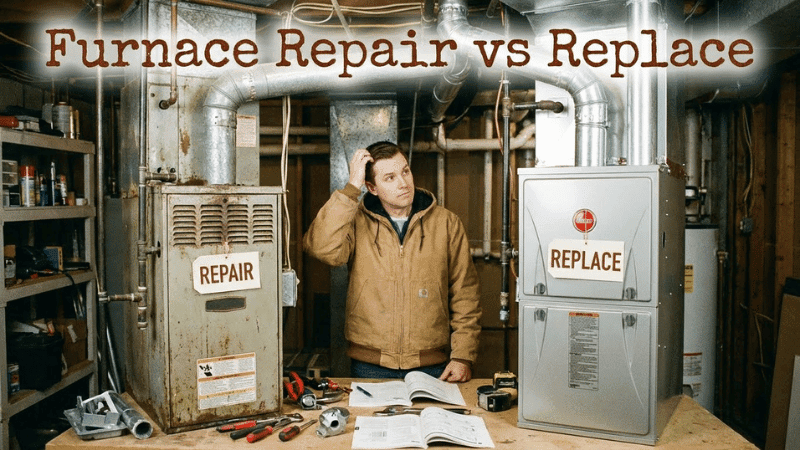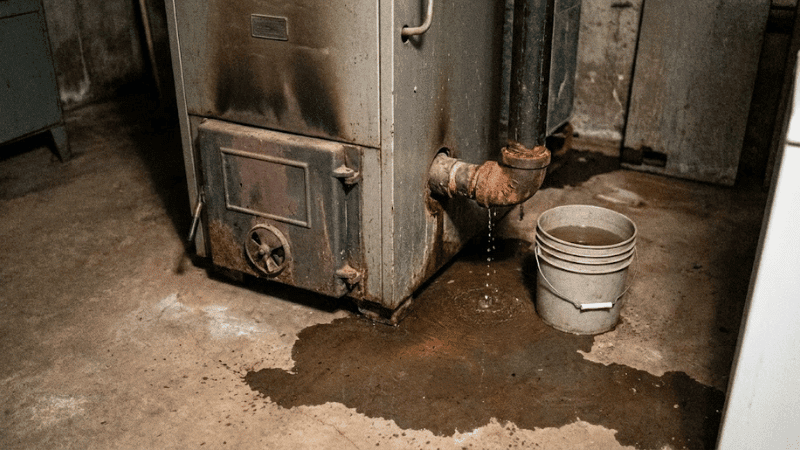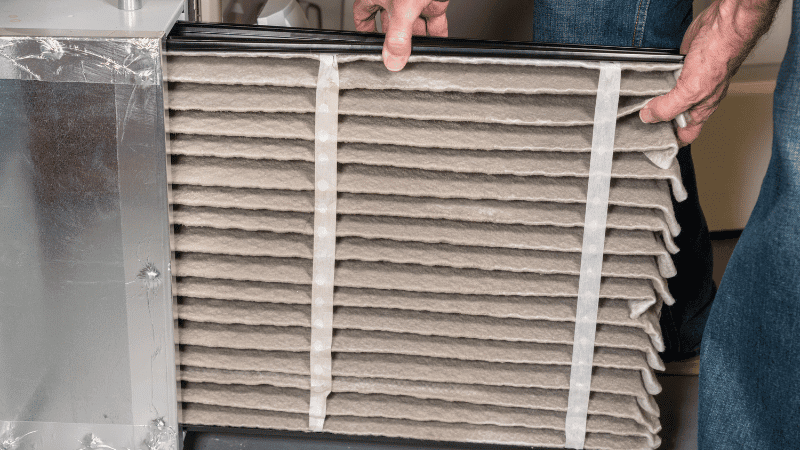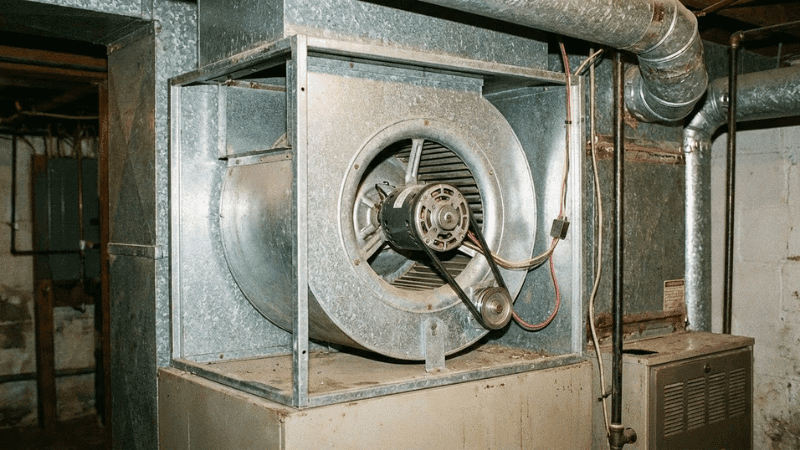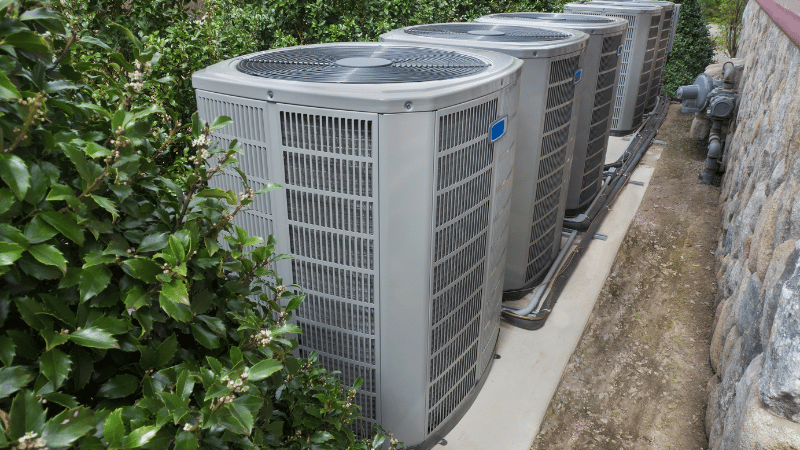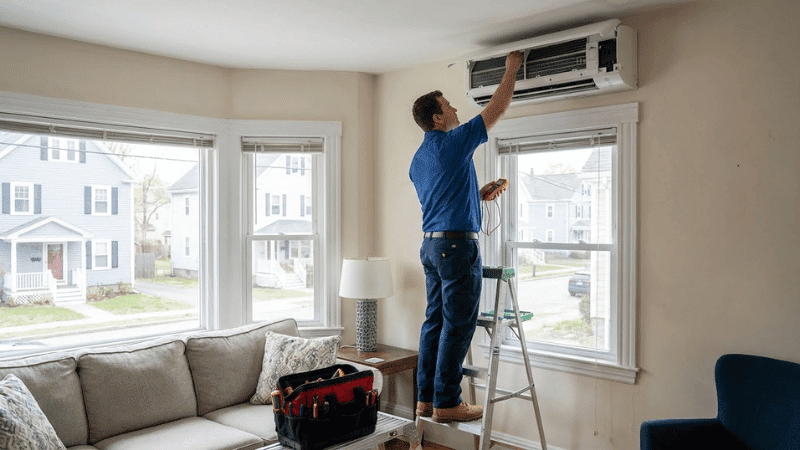How much is the HVAC tax credit?
Thinking about upgrading your heating or cooling system? Now might be the best time ever thanks to the HVAC tax credit available through the federal Energy Efficient Home Improvement Credit (Section 25C of the IRS code). These federal incentives offer non-refundable tax credits when you invest in qualified energy property that makes your home more energy-efficient.
So, what does that mean for homeowners like you?
Here’s why it matters:
- Rising energy costs are putting a dent in household budgets.
- Modern HVAC systems consume less energy and reduce carbon footprints.
- The federal government wants to reward homeowners for making energy-efficient upgrades.
With these new HVAC rebates, you can offset installation expenses significantly. Depending on the type of system you install, you could receive up to $2,000 in tax credits.
Here’s a quick look at what’s available:
System Type | Max Tax Credit | Key Requirement |
Heat Pumps | Up to $2,000 | SEER2 ≥ 15.2, HSPF2 ≥ 7.8 |
Central AC Units | Up to $600 | SEER2 ≥ 16, EER2 ≥ 12 |
Gas Furnaces | Up to $600 | AFUE ≥ 97%, Energy Star |
Whether you’re replacing an old unit or upgrading to meet new SEER2 and HSPF2 standards, the HVAC tax credit can help turn your investment into serious energy savings.
Understanding the 25C Federal HVAC Tax Credit
Let’s break down the basics of the 25C Federal HVAC Tax Credit a golden opportunity for homeowners to save money while upgrading their home comfort systems.
This tax credit comes from the Energy Efficient Home Improvement Credit, which is part of the IRS Section 25C of the tax code. It’s designed to give homeowners a non-refundable tax credit when they install qualified energy property like heat pumps, central air conditioners, or natural gas furnaces. This program runs through 2032, making it a long-term incentive for smarter, more sustainable homes.
So what does that mean for you?
If you upgrade your HVAC system with energy-efficient equipment, you could be eligible for:
- Up to $2,000 for qualified heat pumps
- Up to $600 for central air conditioning units
- Up to $600 for high-efficiency furnaces
To qualify, your system must meet specific performance criteria like SEER2, EER2, HSPF2, or AFUE ratings. These standards ensure your unit is truly saving energy and not just labeled “efficient.”
Keep in mind:
- The tax credit is non-refundable it can lower what you owe but won’t give you a refund.
- Each type of equipment has its own credit cap and installation date requirement (January 1, 2023 – December 31, 2032).
- Systems must be installed in your primary residence, not vacation or rental properties.
In short, the 25C credit isn’t just government jargon it’s a legit way to make your home smarter, greener, and more cost-effective. Just be sure to choose qualified equipment and hang on to that manufacturer certificate for tax season.
Tax Credit Amounts by HVAC System Type
If you’ve ever wondered how much you can actually save with the HVAC tax credit, this section is where things get real. The savings aren’t just nice-to-haves they can be game changers for your budget.
Depending on the type of system you install, the 25C Federal Tax Credit offers different rebate amounts, capped per system type. So let’s break it down by equipment.
A. Heat Pumps – Up to $2,000 in Tax Credits
If you’re looking to get the biggest bang for your buck, heat pumps are where it’s at. These systems do double duty heating and cooling your home using electricity instead of fossil fuels. And because they’re so efficient, the government is offering a non-refundable tax credit of up to $2,000 for qualifying systems.
To earn this credit, your heat pump must be a qualified energy property and meet these key performance benchmarks:
- Split systems (ducted or mixed):
- SEER2 rating of 15.2 or higher
- EER2 of 10.0 or more
- HSPF2 of 8.1
- Must also hit a COP of 1.75 at 5°F
- SEER2 rating of 15.2 or higher
- Ductless systems (non-ducted):
- SEER2 of 16.0+, EER2 of 9.0+, and HSPF2 of 9.5
- SEER2 of 16.0+, EER2 of 9.0+, and HSPF2 of 9.5
The region you live in also matters! Equipment has to match criteria for either the North and Canada Region or the South Region, as defined by CEE classifications.
This is an excellent option if you’re aiming for long-term energy savings while cutting back your carbon footprint.
B. Central Air Conditioners – Up to $600 in Tax Credits
Not ready to switch to a heat pump? Central air conditioners are still in the running for significant savings. If your AC unit meets the required energy efficiency ratings, you could be eligible for a tax credit of up to $600 per system.
Here’s what your split system AC needs to qualify:
- SEER2 rating of 16.0 or more
- EER2 rating of 12.0 or higher
For packaged systems, slightly different thresholds apply:
- SEER2 of 15.2
- EER2 of 11.5
Just like with heat pumps, your system must be part of a matched system with indoor coils and/or a furnace. The IRS takes this seriously, so it’s important to verify your model in the AHRI directory or get a manufacturer’s certificate as proof of eligibility.
This credit is perfect for homeowners upgrading from older, inefficient cooling systems or living in regions with hot summers.
C. Furnaces – Up to $600 in Tax Credits
Furnaces might not get all the attention, but they deserve a spot in this savings spotlight. If you rely on a natural gas or oil-fired furnace for your home’s heating, you can earn up to $600 in tax credits as long as your unit meets specific standards.
What qualifies?
- Must be a gas-fired forced-air furnace
- Needs a 97% AFUE (Annual Fuel Utilization Efficiency) rating
- Must carry an Energy Star certification
And yes this applies to both natural gas and oil furnaces (though oil systems must use an approved fuel type). Like other systems, the furnace has to be installed in your primary residence, not in rentals or vacation homes.
This credit is especially useful for homeowners in colder climates where heating is a major energy cost. Upgrading to a high-efficiency furnace can lower your energy bills while making you eligible for federal incentives.
Recap of Tax Credit Amounts by Equipment
System Type | Max Tax Credit | Key Efficiency Requirements |
Heat Pumps | Up to $2,000 | SEER2 ≥ 15.2, HSPF2 ≥ 7.8, COP ≥ 1.75 |
Central AC Units | Up to $600 | SEER2 ≥ 16.0, EER2 ≥ 12.0 |
Gas Furnaces | Up to $600 | AFUE ≥ 97%, Energy Star certified |
Upgrading your HVAC system isn’t just a comfort upgrade it’s a smart financial decision. Whether it’s summer heat or winter chill, qualifying for these federal HVAC rebates could help you slash installation costs while boosting home value and efficiency.
Regional Requirements for HVAC Tax Credit Eligibility
Here’s something many homeowners overlook: your region can impact whether your new HVAC system qualifies for the federal tax credit. That’s right eligibility isn’t just about buying qualified energy property; it’s also about where you live.
The Consortium for Energy Efficiency (CEE) has divided the U.S. and Canada into two zones:
- North and Canada Region
Includes states like NY, IL, MI, CO, PA, OH, and all Canadian provinces. - South Region
Covers warmer states like TX, FL, AZ, GA, CA, and NC.
Each region has different performance benchmarks based on climate. For example, in the North Region, a ducted heat pump must meet:
- SEER2 ≥ 15.2
- EER2 ≥ 10.0
- HSPF2 ≥ 8.1
- COP ≥ 1.75 at 5°F
- And a capacity ratio of 58% at 17°F or 70% at 5°F
In contrast, the South Region focuses more on cooling efficiency with higher EER2 requirements.
Bottom line? Before claiming your HVAC tax credit, make sure your system meets the criteria for your specific region. This small detail could make the difference between a smooth tax break and a frustrating denial. Always check with your contractor or verify your equipment through the AHRI directory before installation.
Total Annual Tax Credit Limits and Stacking Rules
Now, let’s talk limits because yes, even the best HVAC tax credits come with some fine print. The 25C Federal Tax Credit sets a maximum annual cap, but understanding how to stack these credits smartly can help you get the most out of your upgrades.
Here’s the breakdown:
- The standard annual limit is $1,200 per taxpayer.
- However, if you install a qualified heat pump, your limit bumps up to $2,000.
- That means the heat pump credit doesn’t count toward the $1,200 cap, giving you more room to claim additional HVAC or energy-efficient home improvements.
Let’s say you install a central air conditioner and a gas furnace you can claim up to $600 each, totaling the full $1,200 cap. But if you also install a heat pump, you can tack on another $2,000, making the full potential $3,200 in tax credits for the year.
A few quick rules:
- Credits are non-refundable and apply only to primary residences.
- You can’t carry over unused credit to future years.
- You can claim multiple systems, as long as you don’t exceed the annual limit.
To stay compliant, always keep records of manufacturer certificates, system specs, and IRS Form 5695 when filing. Play it smart, and you’ll get every dollar you deserve.
How to Claim the HVAC Tax Credit
Claiming your HVAC tax credit might sound intimidating, but it’s actually pretty straightforward as long as you’re prepared. Once your new qualified energy property is installed, you’ll need a few key documents and a little tax know-how to claim your savings.
Here’s how to do it:
- Get the Manufacturer’s Certification Statement
This document verifies that your system meets the energy efficiency standards required under Section 25C. Keep this in your records you don’t need to submit it, but the IRS might ask for it later. - Complete IRS Form 5695
This is the form for Residential Energy Credits. Fill it out with details from your install, including cost and equipment type.
Download it here: IRS Form 5695 - File it with your federal tax return
The credit is non-refundable, which means it can lower what you owe but won’t increase your refund.
Pro Tips:
- Work with a licensed contractor who understands AHRI certification and the tax credit eligibility requirements.
- If you’re installing multiple systems, use the same form you don’t need one for each upgrade.
A little documentation goes a long way. Claiming your HVAC rebate is one of the easiest ways to offset the cost of an energy-efficient upgrade.
Common Mistakes to Avoid When Filing
Even with the best intentions, it’s easy to slip up when claiming your HVAC tax credit and that could mean missing out on hundreds (or thousands) in potential savings. Let’s make sure that doesn’t happen to you.
Here are some common pitfalls homeowners make:
- Forgetting documentation: Always keep your manufacturer’s certification and installation receipts. The IRS may ask for proof that your system is a qualified energy property.
- Using the wrong system: Not every HVAC upgrade qualifies. Double-check SEER2, HSPF2, and AFUE ratings, and confirm your unit appears in the AHRI directory.
- Exceeding annual limits: Trying to claim more than the allowed $1,200 (or $2,000 with a heat pump) could delay or reduce your credit.
- Filing for rental properties: This credit only applies to primary residences, not second homes or rentals.
Be smart, stay organized, and review the IRS Form 5695 instructions carefully before you file.
Bonus Credits and Local Utility Rebates
Here’s something that often flies under the radar local utility rebates and bonus HVAC incentives can stack with your federal HVAC tax credit to save you even more.
Many utility companies, like Austin Energy, offer additional rebates for energy-efficient HVAC upgrades. These might come in the form of:
- Cash-back rebates for high-efficiency heat pumps or central AC units
- Free home energy audits to assess your energy usage
- Discounts on smart thermostats or system upgrades
And the best part? These local incentives don’t interfere with your eligibility for the 25C tax credit. That means you can claim both federal and local benefits in the same year.
Before you install, ask your HVAC contractor or visit your utility company’s website to see what’s available in your area. Combining manufacturer promotions, state-level rebates, and federal incentives could unlock serious savings on your next home upgrade.
Conclusion
Upgrading to an energy-efficient HVAC system isn’t just about comfort it’s about smart savings. With the 25C federal tax credit, you could earn up to $3,200 annually by combining eligible upgrades like heat pumps, central air conditioners, and high-efficiency furnaces. Plus, by stacking local utility rebates and manufacturer incentives, you maximize your return on investment.
Just remember:
- Stick to qualified energy property
- Track those SEER2, EER2, HSPF2, and AFUE ratings
- File IRS Form 5695 correctly
- Keep your manufacturer’s certificate handy
With the right planning, your next HVAC upgrade pays for itself literally.
